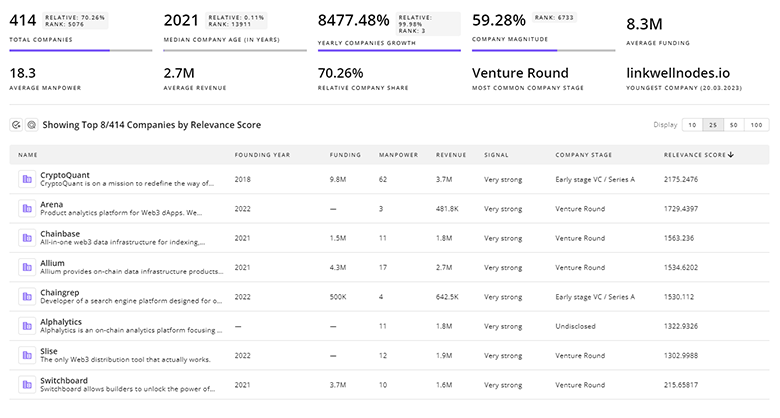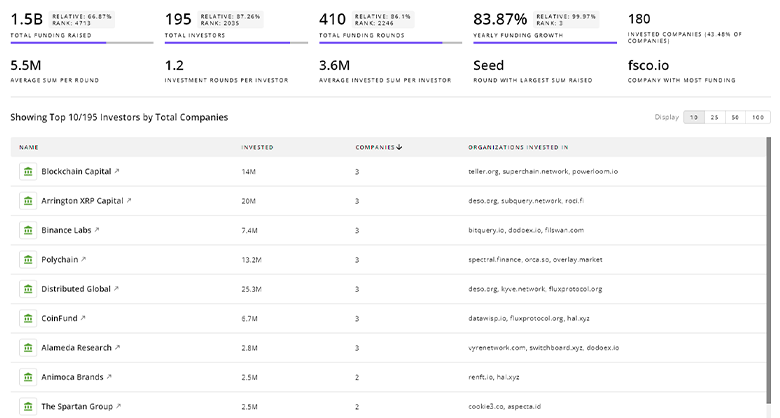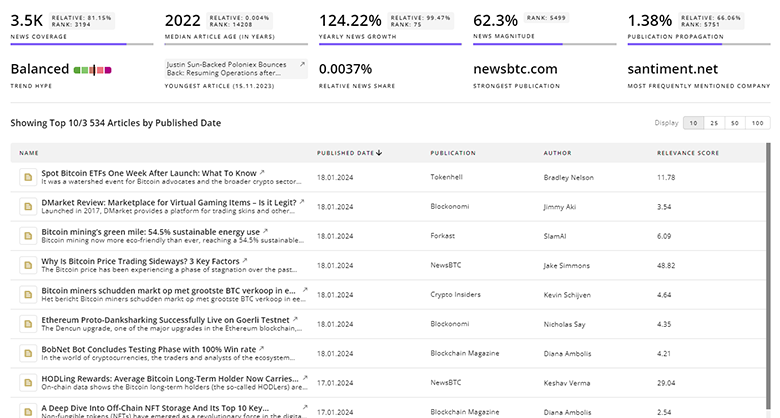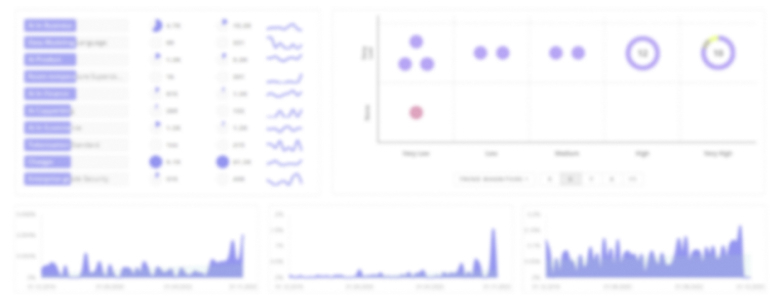
Safety Management Report
: Analysis on the Market, Trends, and TechnologiesThe safety management market sits at a clear inflection point where data, AI, and mobile-first platforms drive measurable growth: the internal data records a 2021 market size of $6.45 billion and a 2030 projection of $12.72 billion, implying sustained demand for integrated EHS solutions. This growth comes with three practical imperatives: adopt real-time data capture to shorten the time from observation to corrective action, apply predictive analytics to move from reactive investigations to preemptive interventions, and treat human factors and culture as levers for measurable incident reduction rather than soft commitments, Fostering Safety to Promote Operational Excellence.
26 days ago, we last updated this report. Notice something that’s not right? Let’s fix it together.
Topic Dominance Index of Safety Management
To gauge the influence of Safety Management within the technological landscape, the Dominance Index analyzes trends from published articles, newly established companies, and global search activity
Key Activities and Applications
- Digital inspections, observations, and incident reporting that replace paper workflows and feed centralized analytics for trend detection and compliance tracking.
So what: digitization compresses feedback loops and reduces record-keeping failures that historically delay corrective actions. - Predictive risk modeling using AI and machine learning to flag high-probability hazards and fatigue or behavior signals before incidents occur.
So what: predictive models enable targeted interventions that concentrate limited safety resources on the highest expected return. - Remote and lone-worker safety management (journey management, geofencing, travel-risk dashboards) to cover dispersed workforces and travel exposures.
So what: geographic extension of SMS reduces blind spots and liability when the workforce operates offsite or abroad. - Process Safety Management (PSM), HAZOP/LOPA, and functional safety for high-hazard industries, integrated with digital lifecycle tools to enforce mechanical integrity and management-of-change procedures.
So what: digital PSM lowers regulatory exposure and speeds audits in heavily regulated sectors. - Contractor, certification, and compliance management (training records, permit-to-work, contractor onboarding) centralized in cloud platforms to reduce administrative error and supplier risk.
So what: central contractor oversight reduces supply-chain-driven incidents and audit failures.
Emergent Trends and Core Insights
- Shift from simple frequency metrics (TRIR) to severity-focused metrics (PSIF, SIF) and predictive indicators; organizations adopt these to prioritize interventions that prevent high-impact events news landscape executive summary.
So what: changing metrics change decision rules and capital allocation, channeling spend to fewer, higher-value controls. - Platform-ization: buyers prefer integrated EHS suites over point tools, driving consolidation and an M&A path for niche vendors Company Landscape Report.
So what: vendors that show quick integrability and modular APIs win enterprise deals or become acquisition targets. - Convergence of AI, IoT, and video analytics for real-time hazard detection and behavioral insights; patents show heavy activity in worker tracking, sensor fusion, and predictive analytics.
So what: technical feasibility now exists to automate some frontline supervision tasks; the remaining gaps are data quality and governance. - Safety culture + human factors as operational levers: advanced programs embed coaching, BBS observation, and leadership accountability into digital workflows (training and behavior modules).
So what: culture programs tied to measurable KPIs reduce normalization-of-deviance and improve reporting rates. - Safety perimeter expansion: remote work, travel, and gig work require unified risk oversight spanning physical, psychological, and travel risk domains.
So what: EHS programs must integrate occupational health, travel risk, and mental well-being to lower total incident and absentee cost.
Technologies and Methodologies
- Cloud-based EHS platforms and mobile apps for real-time capture and compliance workflows; modular SaaS architectures enable faster rollouts and cross-site visibility.
Business impact: lowers administrative overhead and creates a single source of truth for audits. - AI and ML for predictive analytics, anomaly detection, and NLP extraction from incident narratives; vendors commercialize video analytics for PPE compliance and unsafe-behavior alerts.
Business impact: improves early-warning capability but requires labeled data and governance. - IoT sensors, wearables, and edge processing for environmental monitoring, location, and vital-signs where applicable.
Business impact: reduces detection latency and supports automated shutdowns or alerts. - Virtual and augmented reality training for high-risk scenarios and PSM drills; VR reduces risk during experiential learning and scales specialist coaching.
Business impact: improves competence retention and reduces incident rates per trained worker. - Closed-loop corrective action and barrier management: integrate observations, root-cause, CAPA, and verification into one traceable cycle to ensure fixes persist.
Business impact: prevents recurrence and documents compliance evidence for regulators.
Safety Management Funding
A total of 234 Safety Management companies have received funding.
Overall, Safety Management companies have raised $5.4B.
Companies within the Safety Management domain have secured capital from 797 funding rounds.
The chart shows the funding trendline of Safety Management companies over the last 5 years
Safety Management Companies
- Safety Management Group — Safety Management Group combines on-site QHSE consulting and proprietary technology to deliver EHS programs across industries; the company leverages 30 years of consulting experience and a global practitioner base to manage contractor safety, compliance, and culture change Safety Management Group. Their strength lies in integrating consulting-led interventions with digital workflows to close the gap between policy and practice. This approach suits large projects and regulated sites that need both subject-matter expertise and software-driven evidence for audits.
- Safeway Management Group (SMG) — Safeway Management Group offers outsourced safety management and a software-driven delivery for operations that lack in-house safety capacity Safeway Management Group(SMG). They package contract safety services, digitized policies, and training to reduce incident exposure in logistics and manufacturing; their model targets mid-market customers that need turnkey compliance and fewer internal resources. Their blended services model accelerates deployment where internal change capacity is low.
- SafetyIQ — SafetyIQ focuses on lone-worker, journey, and fatigue management with analytics to surface at-risk workers and predict event likelihood across remote operations SafetyIQ - Predictability at work.
- Safe-T-Products — Safe-T-Products manufactures conveyor and fall-protection hardware with compliance to Australian and international standards; they occupy a product-centric niche supplying engineered safety devices for material-handling and high-risk maintenance tasks Safe-T-Products. Their value comes from combining hardware certification and domain expertise, which aligns with the machine-safety and safety-engineering need for certified, field-hardened controls.
- Process & Safety Solutions LLC — PSS specializes in PSM consulting for petrochemical and ammonia refrigeration industries and uses OSHA-aligned compliance programs, incident investigation, and safety culture assessments to lower regulatory and catastrophic risk Process & Safety Solutions LLC. Their domain focus on process safety complements digital PSM tools and is attractive for operators that must demonstrate mechanical integrity and MOC controls under formal compliance regimes.
Get detailed analytics and profiles on 5.4K companies driving change in Safety Management, enabling you to make informed strategic decisions.

5.4K Safety Management Companies
Discover Safety Management Companies, their Funding, Manpower, Revenues, Stages, and much more
Safety Management Investors
TrendFeedr’s Investors tool provides an extensive overview of 720 Safety Management investors and their activities. By analyzing funding rounds and market trends, this tool equips you with the knowledge to make strategic investment decisions in the Safety Management sector.

720 Safety Management Investors
Discover Safety Management Investors, Funding Rounds, Invested Amounts, and Funding Growth
Safety Management News
Explore the evolution and current state of Safety Management with TrendFeedr’s News feature. Access 2.9K Safety Management articles that provide comprehensive insights into market trends and technological advancements.

2.9K Safety Management News Articles
Discover Latest Safety Management Articles, News Magnitude, Publication Propagation, Yearly Growth, and Strongest Publications
Executive Summary
Safety management now centers on three operational choices: unify data and workflows into platform architectures that remove manual handoffs, invest in predictive analytics layered on quality data to concentrate interventions on highest-value risks, and pair technology with explicit human-factor programs so that cultural change translates into measurable incident reduction. For buyers, the immediate actions are to consolidate point tools into a modular EHS stack, require transparent model validation and data governance for any AI claims, and prioritize vendor partnerships that combine domain consulting with rapid software integration. Vendors should make their platforms interoperable through APIs, demonstrate causal safety outcomes tied to specific KPIs, and offer deployment models that combine remote monitoring with local coaching to accelerate adoption across regulated and distributed operations.
We're looking to collaborate with knowledgeable insiders to enhance our analysis of trends and tech. Join us!













